On October 9th, 2024, Green Action Centre and Peg City Car Co-op welcomed Charles T. Brown to Winnipeg to speak about Equitable Cities.
Charles T. Brown is the founder and principal of Equitable Cities, a minority- and veteran-owned urban planning, public policy and research firm focused at the intersection of transportation, health and equity. He is also an adjunct professor at the Edward J. Bloustein School of Planning and Public Policy at Rutgers University. He is the host of Arrested Mobility, a podcast that asks: What can we do to change the outcomes when people of colour step out their door to exist in the world?
Winnipeg, like cities across North America, shifted its pattern of development after the second world war to being car-oriented. At the same time as we were experiencing “white flight” from our core neighbourhoods to the suburbs we also shifted our funding priority away from public transit into highway expansion. The development pattern for the new neighbourhoods being built featured exclusionary zoning, where the housing was built away from services and destinations, requiring personal vehicles to travel between the zones to accomplish even basic tasks, like getting kids to school or picking up a few groceries. Seventy years later, we can see the results of this shift all around us from bumper to bumper congestion to the high rates of pedestrian injuries and deaths, particularly in our most vulnerable neighbourhoods. Needless to say, we were delighted to have an expert like Charles bring his years of experience and insight to a keynote presentation called Equitable Cities: How to liberate those caged by our transportation system.
In his talk, Charles walked us through his childhood in America and his early experience to the arrested mobility of growing up on a community without sidewalks or convenient transit, to his work today across North America as cities are trying to recognize past failures and re-build with equity and access as top of mind.
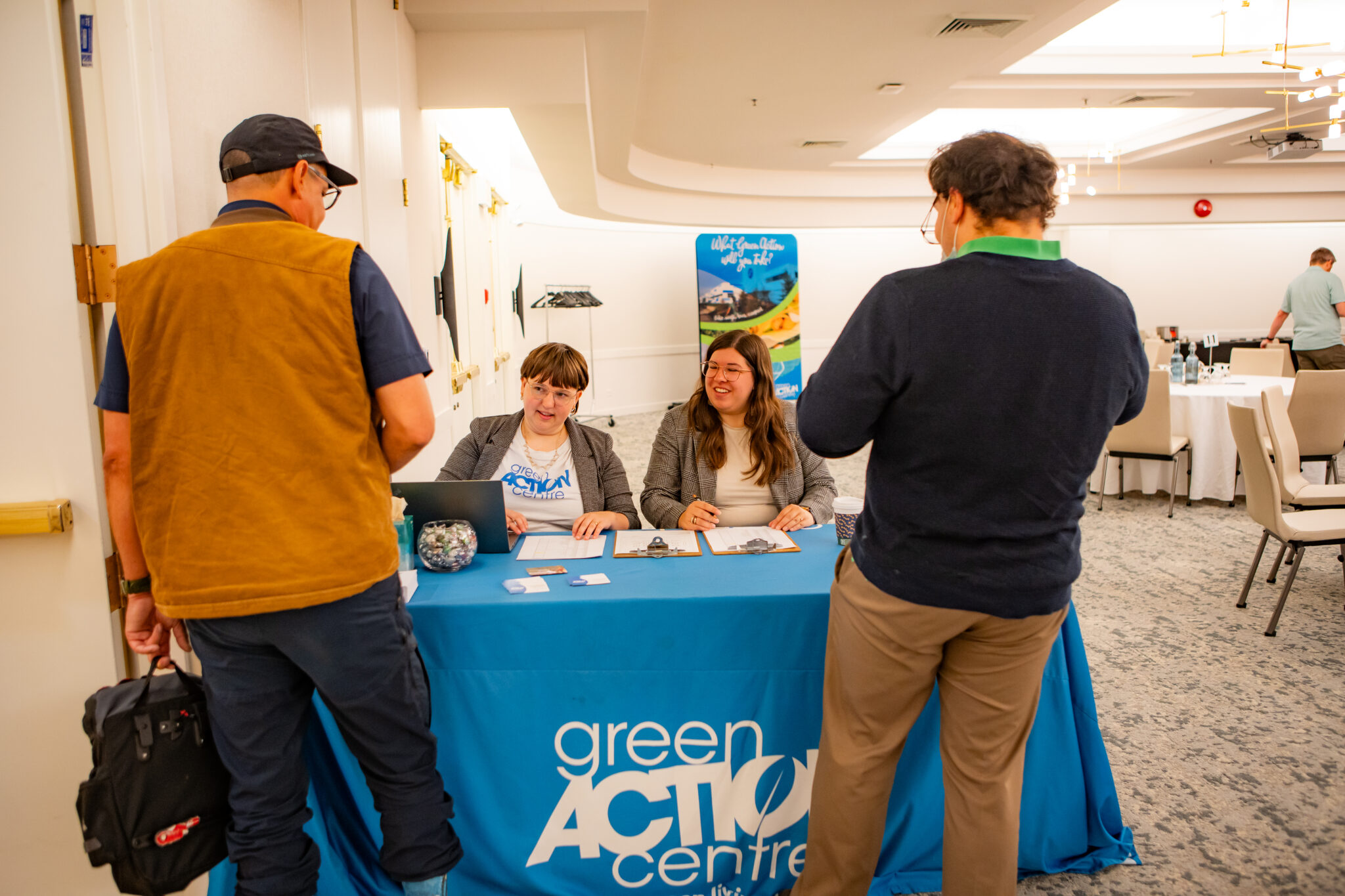
Members of Green Action Centre’s Transportation team, Lily and Ariel, check in guests. Photo by Joey Senft
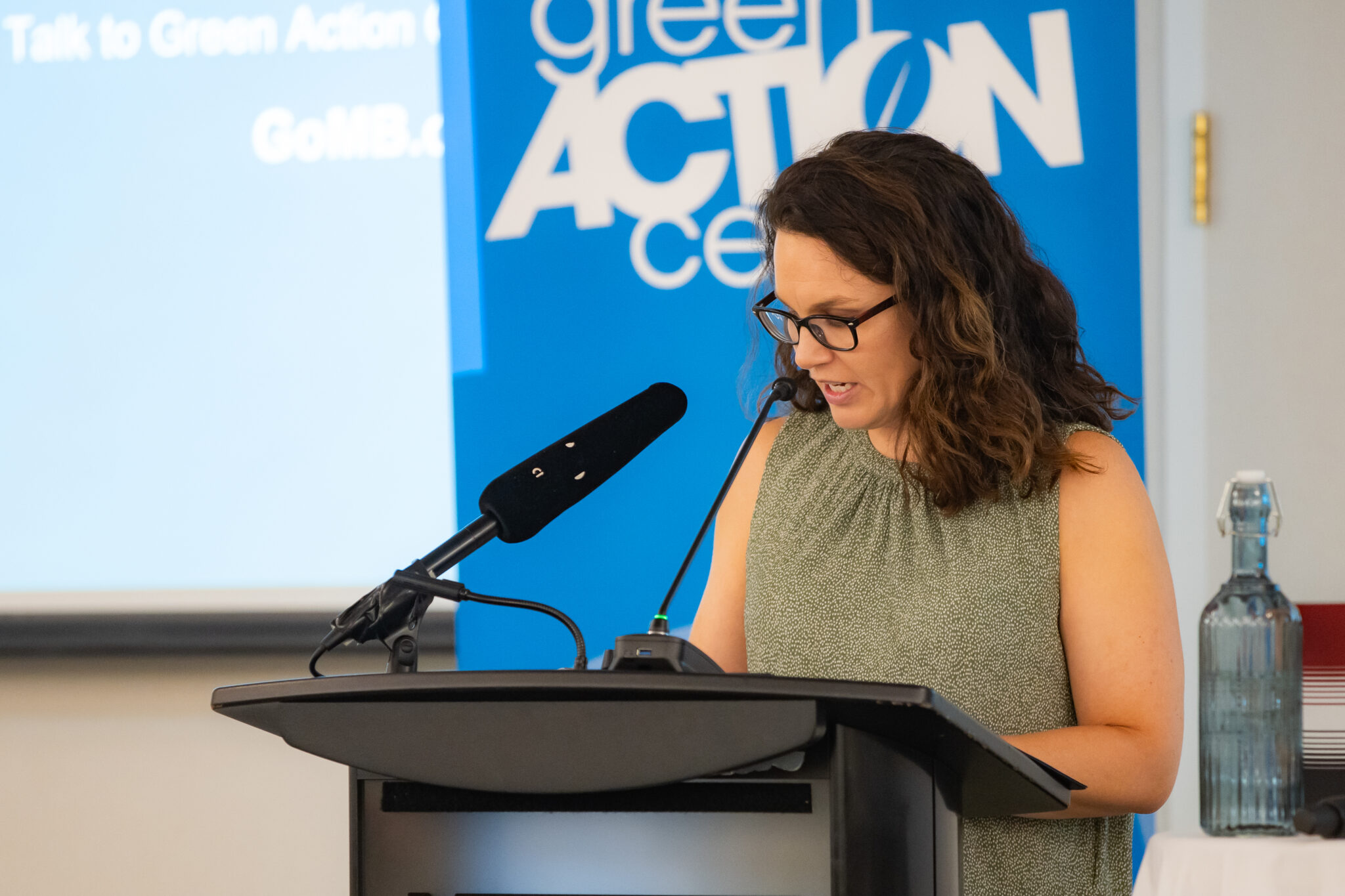
Event organizer Mel Marginet opens the day. Photo by Joey Senft
A few highlights:
“History doesn’t say goodbye, history says ‘see you later’”
Arrested Mobility is a direct manifestation of racism across four distinct realms of racism:
- The personal: our values, beliefs, attitudes and feelings
- The interpersonal: people act on their fear, prejudices and stereotypes
- The institutional: policy, practices, rules and procedures
- The cultural: what groups value as right, true, beautiful, normal and worthy of our time and attention.
This affects the physical and social mobility of minority groups.
Often we will talk about the social determinants of health. But what if that’s incorrect? What if we looked around and saw the political determinants of health? Research is showing more and more how doctors no longer need to ask about family medical histories to determine a person’s life expectancy. They can simply ask for their postal code.
When discussing the restrictions on social and physical mobility, we must talk about the four Ps of Over Policing
Policy efforts
Planning efforts
Policing in terms of law enforcement
Polity: for example, Karen and Ken, who can manipulate the above systems to exclude.
How does this manifest? In Winnipeg, we can see the evidence in, for example, Under-investment and over-policing: safe biking for whom? Or, in First Nations Experiences of Racism in Policing.
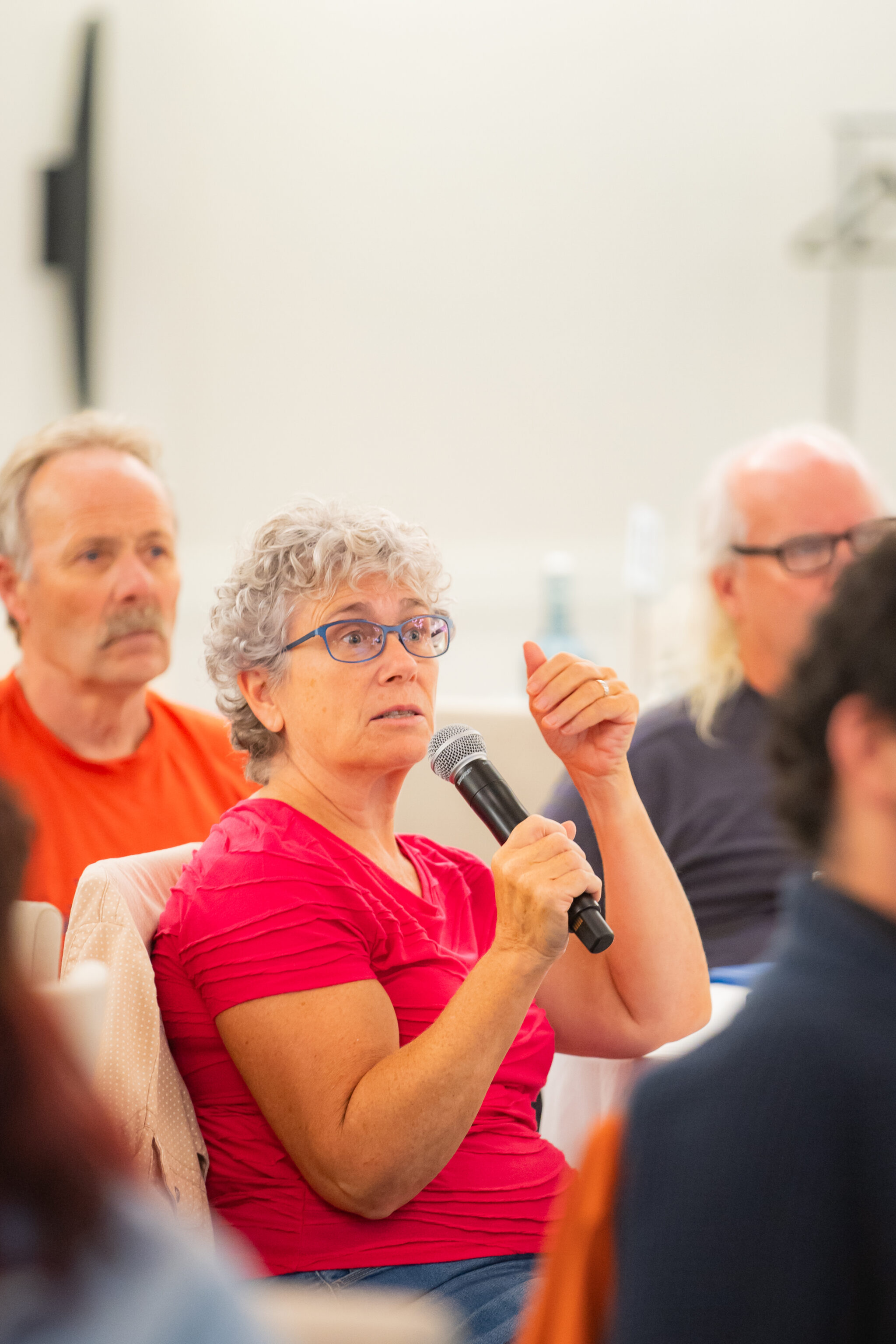
Former longtime Green Action Centre staff member, Beth Mckechnie, participates during the quetion period. Photo by Joey Senft.
How can we Start to Build a more Equitable City?
Justice Oriented Framework.
Recognition: do we recognize past harms when we go into communities?
Distributive: who has physical access to the street, park, trail? (“proximity is not access”)
Procedural: who has influence over design, programs etc?
Interactional: what makes people feel welcome or unwelcome? Safe or unsafe?
Representational: do people feel their experience and history is represented in the space?
Restorative: for example, recapping a highway that has divided communities
Care: how do we demonstrate our care for the space and other people?
12 Actions:
- Racial Equity Action Plan
- Prioritize safety investments
- Equitable funding (not equity, equitable is based on need)
- Capacity building programs
- Public transit and active transport. Enhance and expand in underserved communities.
- Prioritize community driven solutions, and implement them
- Education and awareness campaigns – culturally and linguistically
- Equity focused enforcement
- More data collection and analysis
- Equity audits and accountability
- Foster inter-agency collaboration. No once can do it by itself
- Change in leadership. *long pause” This is a political fact! Some people need to get out of office.
Charles ended his keynote with a warning for everyone in the room to heed:
- Once all of the above great work is done, watch out for: gentrification and displacement.
A saying at the black barber shop is that a tree planted today matures just in time for gentrification to occur.
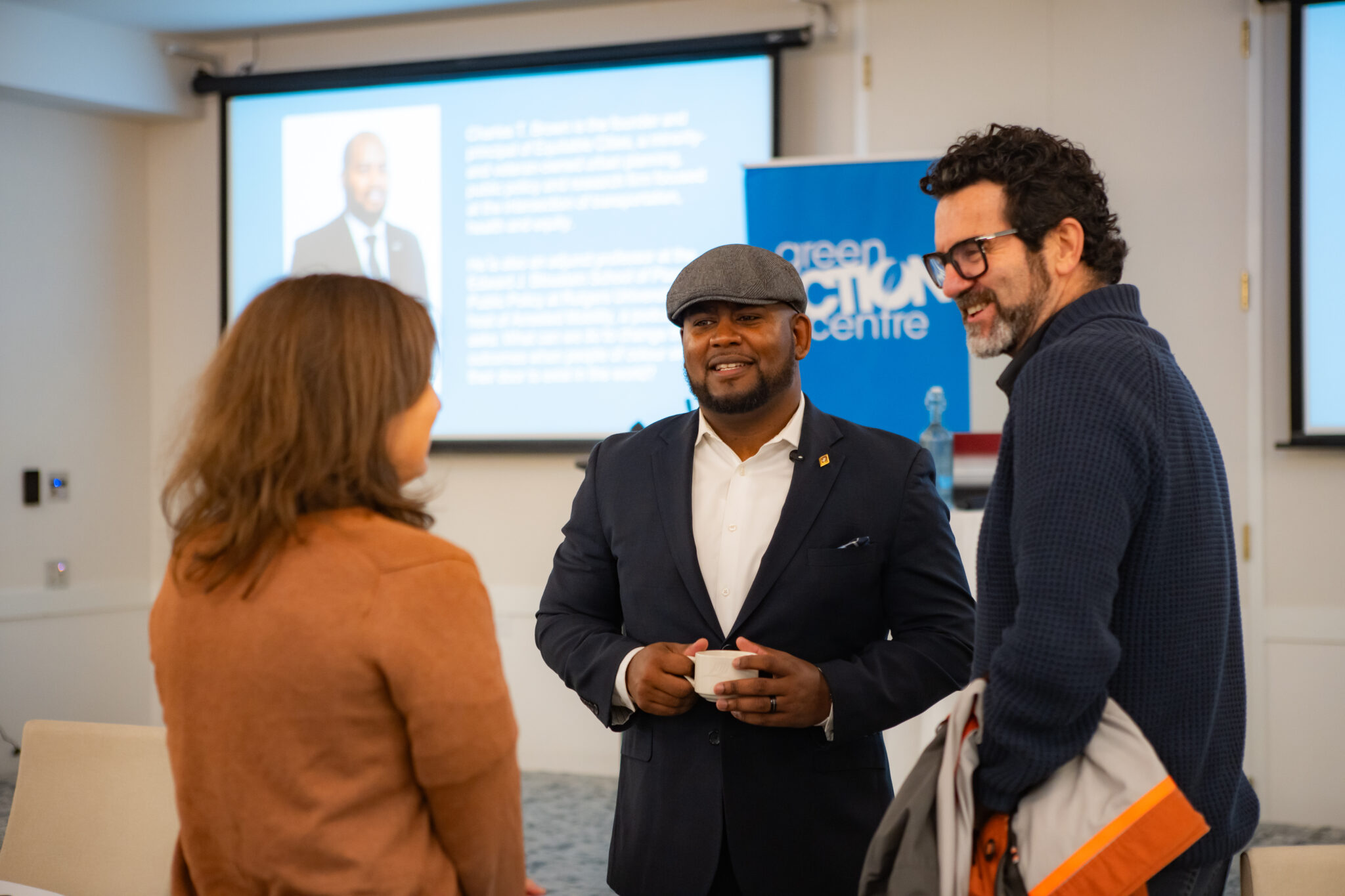
Green Action Centre’s Executive Director, Josep, speaks with Charles before the keynote. Photo by Joey Senft
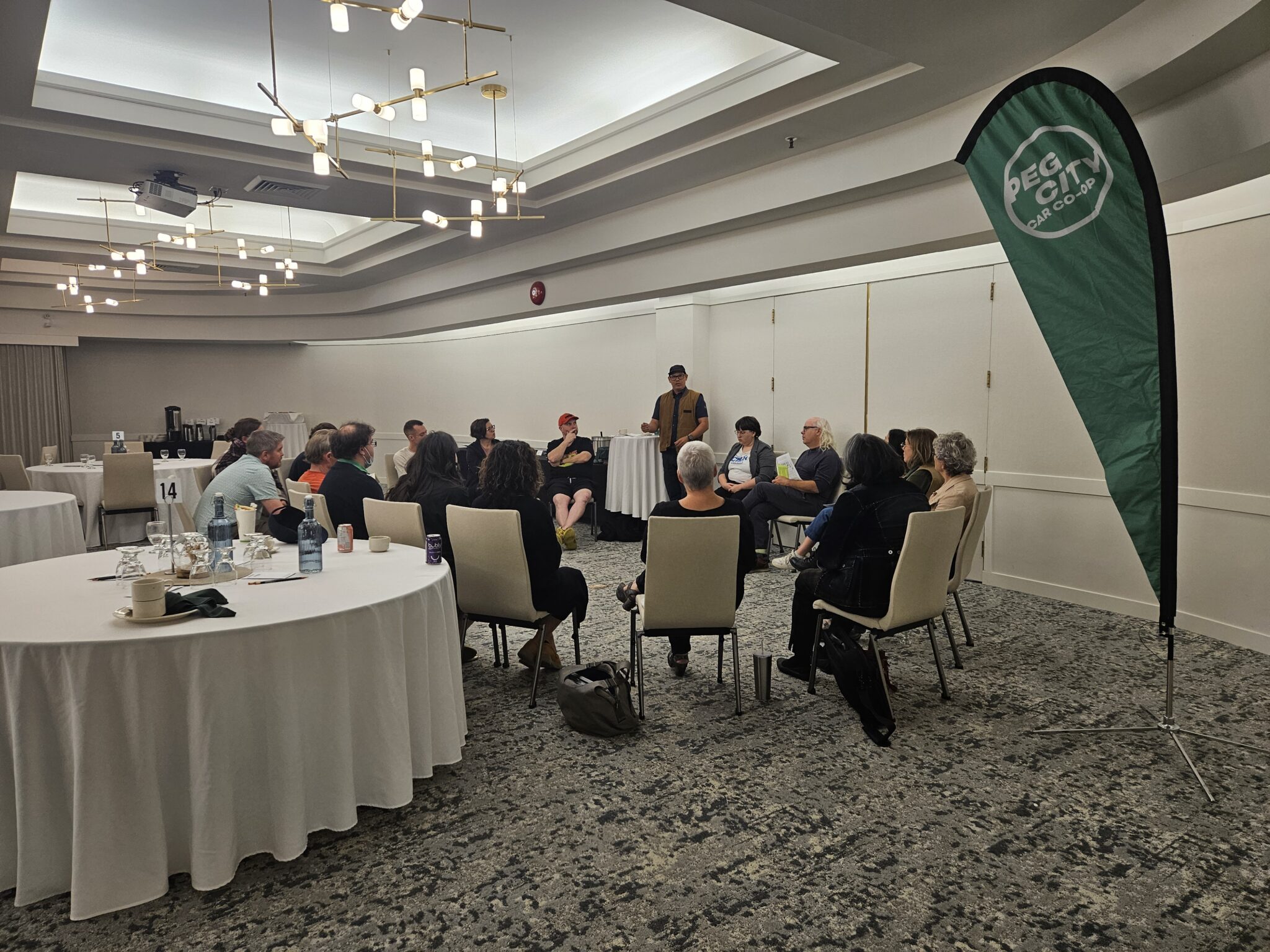
After a question and answer session, participants who could stay took part in breakout sessions. The three breakout sessions offered were:
ARRESTED MOBILITY: Moving While Indigenous
Facilitated by: Adrian Alphonso
Adrian opened the session with two items; the acknowledgement of the elephant in the room following the speaker presentation, and an opportunity to connect with movement through a standing group wave. The introduction of movement was meant to act as play for the group. This was crucial to breaking down a barrier within the breakout group, as these spaces rarely make time for play. Typically, spaces such as this one rely solely on logic. The play helped us become one.
Adrian discussed the need for folks to address their biases and change how they think about people who bike in our city. Adrian used prompts to encourage us to discuss this topic with our circle partners and gather other perspectives. Four questions were asked during this breakout session.
- What was the keynote address?
- Why does that matter?
- How will you affect change?
- What is next for you?
Finally, after discussing these questions, we unpacked ways of decolonizing space. We discussed the issues that arise when proper relationships with Indigenous folks are not built when planning occurs. Adrian reminded us that when planning occurs, everything is often already decided by the time consulting begins with Indigenous folks, which is not leads to improper consultation.
POINT DOUGLAS: A Neighbourhood of Opportunity
Facilitated by: Sel Burrows
In this session, Sel shared the story of Point Douglas, one of Winnipeg’s oldest neighbourhoods. As Winnipeg abandoned core neighbourhoods in favour of investments in the outer suburbs, Point Douglas residents found themselves having to deal with a growing crime rate. Sel shared how the community worked together to create and implement various initiatives over the years to discourage crime and gang activity. Sel noted that community members were often scared or hesitant to call the police, as that could lead to escalating conflict. One memorable story was how the women of the neighbourhood (so many success stories of the neighbourhood are tied to the women!) were frustrated with drug dealing in the local park. To solve this issue, they decided to walk their dogs in the park and to converse with the dealers. Needless to say, this was not an ideal selling situation for the dealers and they left the park in a little over a week!
Sel noted that it wasn’t up to the community members to solve the root causes of the issues the neighbourhood was facing. They were simply a group of neighbours who wanted a safe place for their families to live. It’s up to governments to invest in places like Point Douglas, and into the root causes of drug use, homelessness, and gang activity.
Sel also shared how disinvestment has left the community without recreation opportunities for the kids, which leaves them vulnerable to gang recruitment, or just getting into trouble when they’re bored. The City of Winnipeg is currently investing over $20 million dollars in the South Winnipeg Recreation Campus (a project with a total budget of over $70 million). In the meantime, Point Douglas doesn’t have a single recreation program.
FREEDOM TO MOVE: How do we build an accessible city for all?
Facilitated by: Sarah Manteuffel
Sarah shared her story of being a person with a physical disability and how it affects her ability to travel in Winnipeg. She shared how, when she was living in Toronto, she was able to access more of the city due to a more robust public transportation system. In Winnipeg, she is more often dependent upon her adaptive vehicle to access the city. The discussion was then opened up to the group to share additional stories as well as possibilities for improvement.
It was noted by several participants how it’s difficult to solve problems for one disability group without creating challenges for others. An example was accessible seating at the front of the bus, which is needed for wheelchair users as well as strollers. At the same time, those with physical or neuro disabilities also find it more challenging to go to the back of the bus.
Of course, while it can feel that people are being “divided and conquered” in these types of situations, the problem is one of implied scarcity: we have so few buses that this precious space has a demand that we cannot meet. If we were able to run frequent transit, there would be more space for everyone. The same can be said on our streets, where protected bike lanes are often a cause of concern for those in the blind community as well as those needing wheelchairs or walkers. However, if we had calmer streets we wouldn’t need to create so much infrastructure to separate users, which creates barriers for those with disabilities.
In the Q&A session, Charles spoke about why he talks about race before disability, and he noted that it’s because, even within the disability community there are racist divides. More often, those from racialized communities within the disability community experience Arrested Mobility at a higher rate.
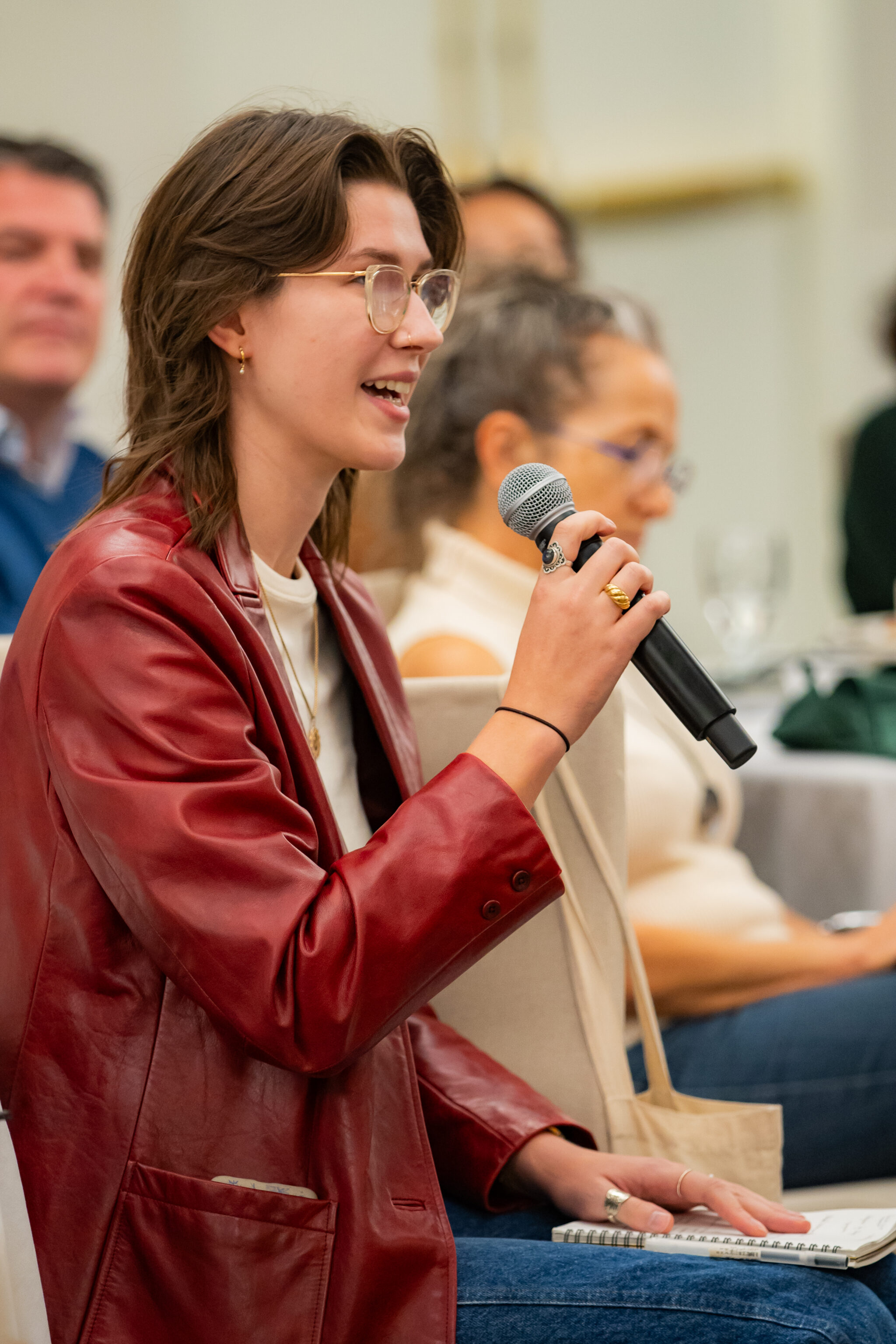
Rachael Alguire of the Exchange District BIZ enages in the question period. Photo by Joey Senft
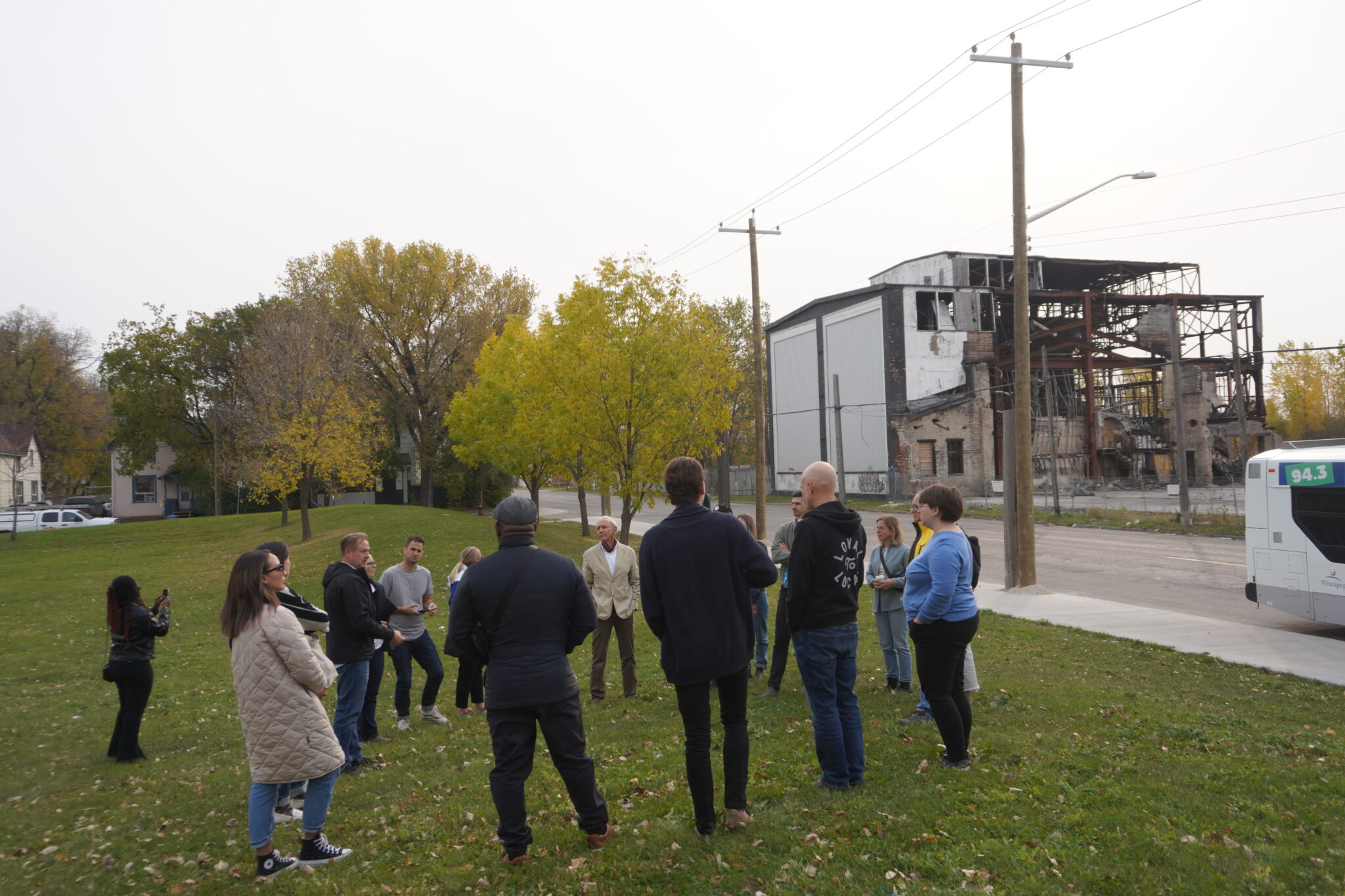
The Tour group chats near a burnt out building in the Point Douglas neighborhood
Bus Tour
On October 10th, a group of city planners, architects, engineers, transit planners and active community members met with Charles at The Forks. The group hopped aboard a Winnipeg Transit bus and headed to three destinations.
THE ARLINGTON BRIDGE
The first stop was the Arlington Bridge. The group learned about the history of the bridge and the timeline leading to its closure in November 2023. Charles shared his observations from the bus trip from The Forks to the base of the bridge, observing how starkly things changed as we went under the train tracks at Higgens and continued North on Main. The pattern of disinvestment is very noticeable, but at the same time Charles spoke about the “flavour” and character on the North side of the Arlington bridge, and how the neighbourhood is alive, while the downtown area feels more lifeless.
The loss of the Arlington Bridge is a direct cause of “arrested mobility’ to the people who live in the North End. These folks now have to travel much further to access crossings at Salter or McPhillips. As we were discussing the bridge, a resident of the neighbourhood joined our group to engage in our discussion and to thank us for drawing attention to the loss of this bridge. He commented that “those people on the south side wouldn’t have to put up with this”. Residents of the city know when they are being left behind by city investment and disinvestment.
As we spoke about opportunities for the future of the bridge, Charles’ advice was to look at the North End neighbourhood and to be sure to protect the folks living there from gentrification and displacement. “As an outsider, I see a neighbourhood that I would want to live in” Charles said of William Whyte. “When investment is made [whether it’s a redeveloped bridge or rail relocation] developers and outsiders will want to come into this neihbourhood. The people who already live here need to be protected now, so they can stay in their neighbourhood.”
POINT DOUGLAS
The next stop of our trip was the Point Douglas neighbourhood, which is currently undergoing a neighourhood plan. We spent a majority of time in this neighbourhood as there are many examples here of opportunities and challenges. For example, zoning changes are going to make it easier for previously “industrial” land to become mix-use. Another major change for the neighbourhood will be running frequent transit down Sutherland Avenue (although that change will be delayed by a year due to new signal lights being needed, meaning the frequent transit will run for a year down Higgins Ave, which is blocked from most of the residents by the rail tracks).
Charles had many questions for the planners working on this project, who we were fortunate to have with us on the tour. We also talked about the challenges cities like Winnipeg face, in that we have such a small planning department for a city of our size. Planners are also working under the City of Winnipeg Charter, which means they are under Provincial authority. This can result in conflict when plans and strategies at the municipal level are then over-ruled by provincial boards.
The conclusion of our discussion is that Point Douglas is a neighbourhood with incredible potential and all of the fundamental building blocks. But, again, Charles cautioned that gentrification and displacement are a real threat to the neighourhood if the city does begin to reinvest. As we were reminded from the keynot presentation the day before “the people currently living in this neighbourhood need to see themselves in any drawings and renderings of the future.” We don’t want Point Douglas to be a neighourhood where trees planted today mature in time for outside investors to benefit from, while those who have built such a strong community through the challenges are left displaced from the rewards.

James Platt, senoir planner with the City of Winnipeg, speaks during our visit to Point Douglas while Charles looks on.
CASTLEBURY MEADOWS
Our final tour stop was in a new development in Winnipeg’s Northwest called Castlebury Meadows. This development has been a challenge for many provincial and city services. For example, the streets were built by the developer in a way that makes it impossible for school buses to access parts of the development. The city was also tasked with bringing basic infrastructure to the area for the development, and the design of the neighbourhood makes it so that that initial investment hasn’t been recovered by property taxes, meaning the city falls further behind every year through regular operating expenses.
This greenfield development, however, is now a home to many people. Despite the restrictive zoning of these types of developments, we noticed how community members were setting up home-based businesses to service the community (to access the “business area”, most folks would have to drive as the distance and walk/bike infrastructure is not easy to navigate). A google search in the neighoburhood will find local catering for food pick-up, nail and hair salons, music lessons and more. Due to the area being poorly serviced by transit, we saw mulit-car garages that were full, with vehicles spilling out onto driveways.
Planners noted how difficult they find it to go into neighourhoods like this after people have moved in, to install missing infrastructure like sidewalks. They find the residents are dependent on parking cars in driveways, leaving narrow space for a sidewalk and resulting conflict between neighbours who want a sidewalk, and those who don’t want to lose the space.
Charles noted that, even though these neighbourhoods have a higher household income than, for example, those who live around the Arlington Bridge, there is still arrested mobility. For example, new Canadians drawn to this new housing from abroad will often have multi-generational households. How can we ensure seniors, as well as young children, can safely move around the development without a vehicle? How can we ensure seniors can access businesses and services on foot, by transit or with an assisted device, like a scooter?
We discussed how cities are going to continue to approve greenfield development (in Winnipeg, our goal is 50% infill, 50% greenfield), and we have to build with mobility in mind. The group discussed the tension that can exist between outside developers and city planners, and how we sometimes lose out on new developments being built to adopted plans and standards, due to politics. We must ensure greenfield developments don’t have “arrested mobility” built-into them from day one, as that is unfair to those who will live there for decades to come.
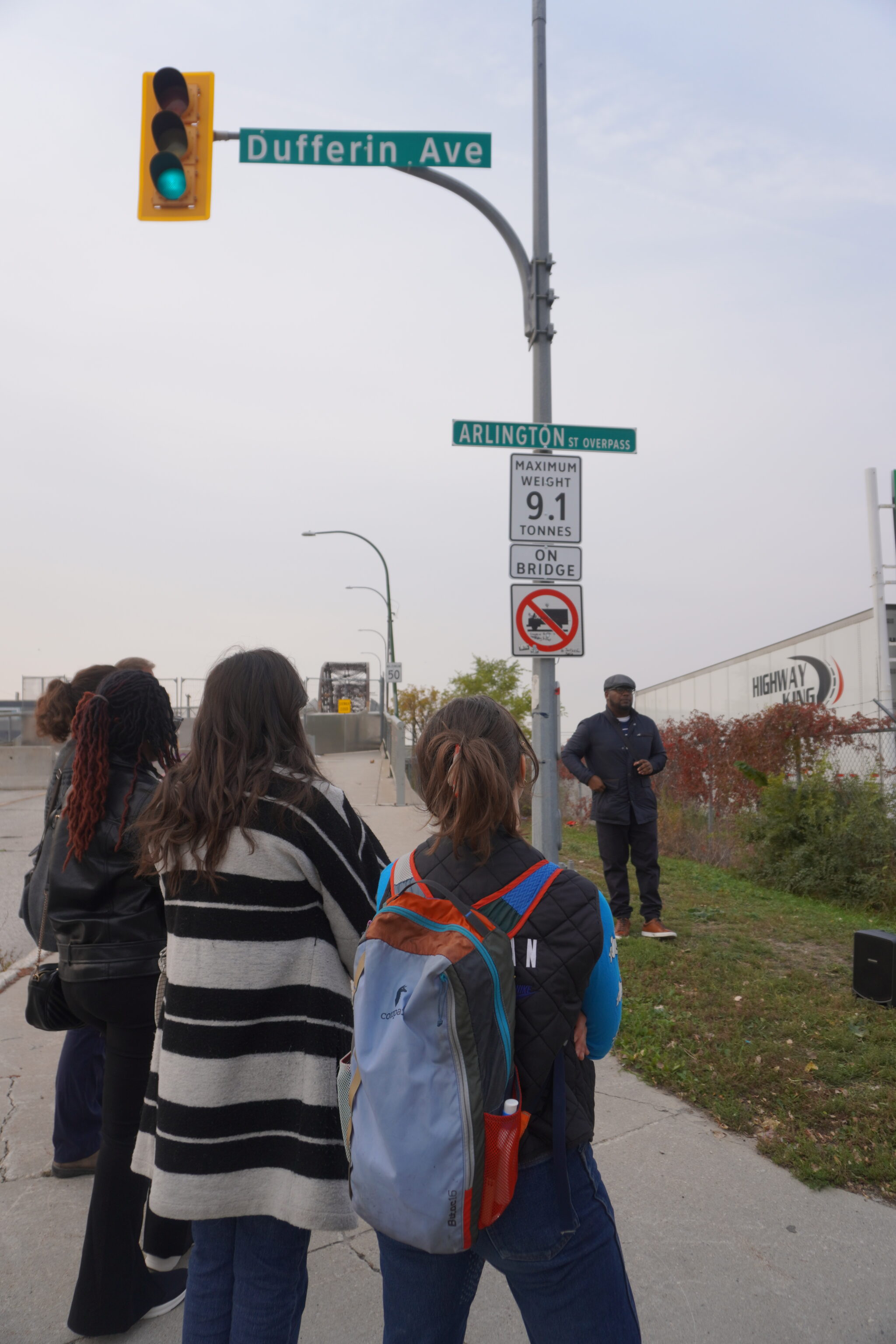
Charles speaks in front of the shuttered Arlington Bridge
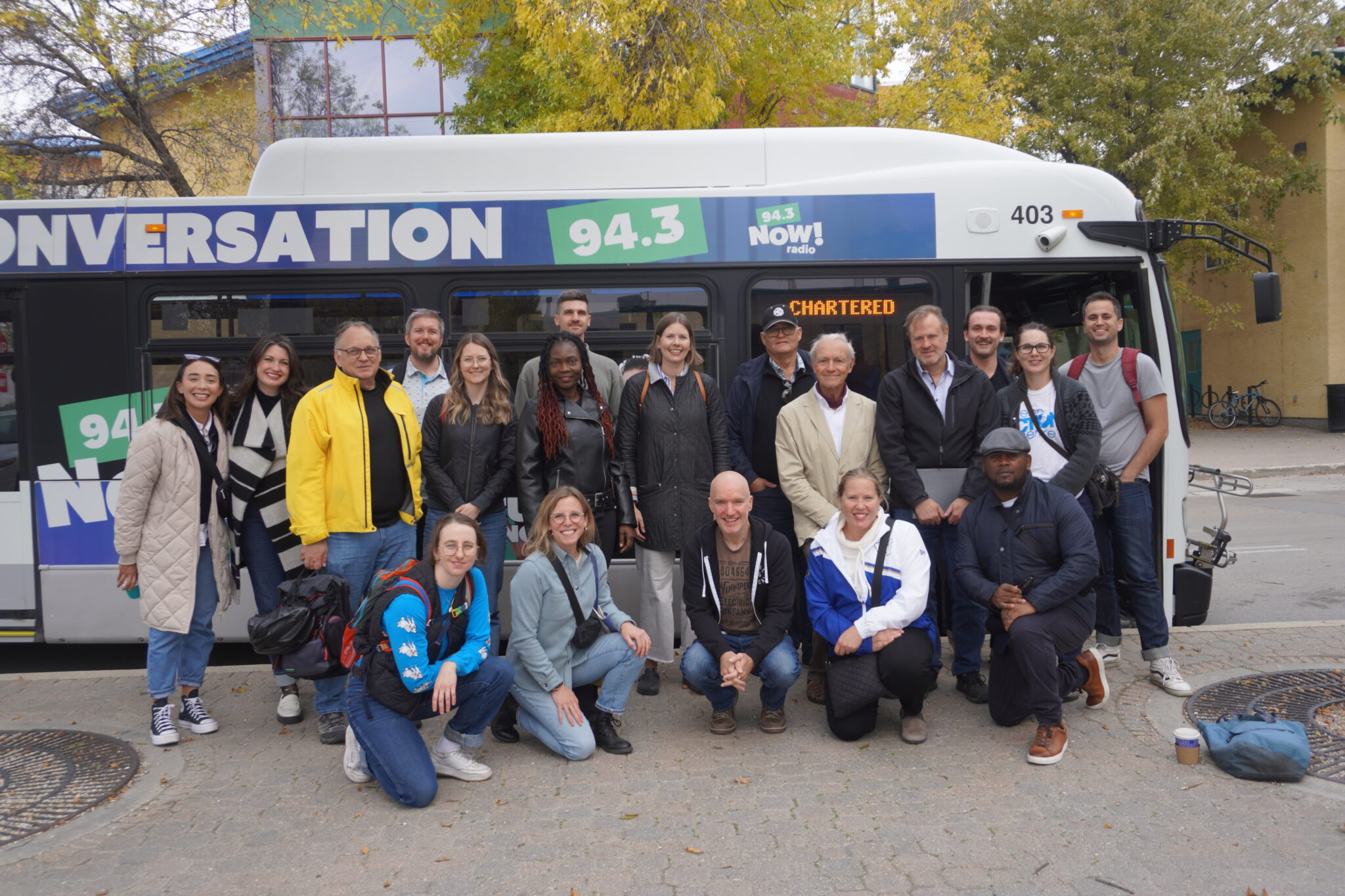
Group photo after the tour!
Thank you to all our Sponsors for your Generous Support!
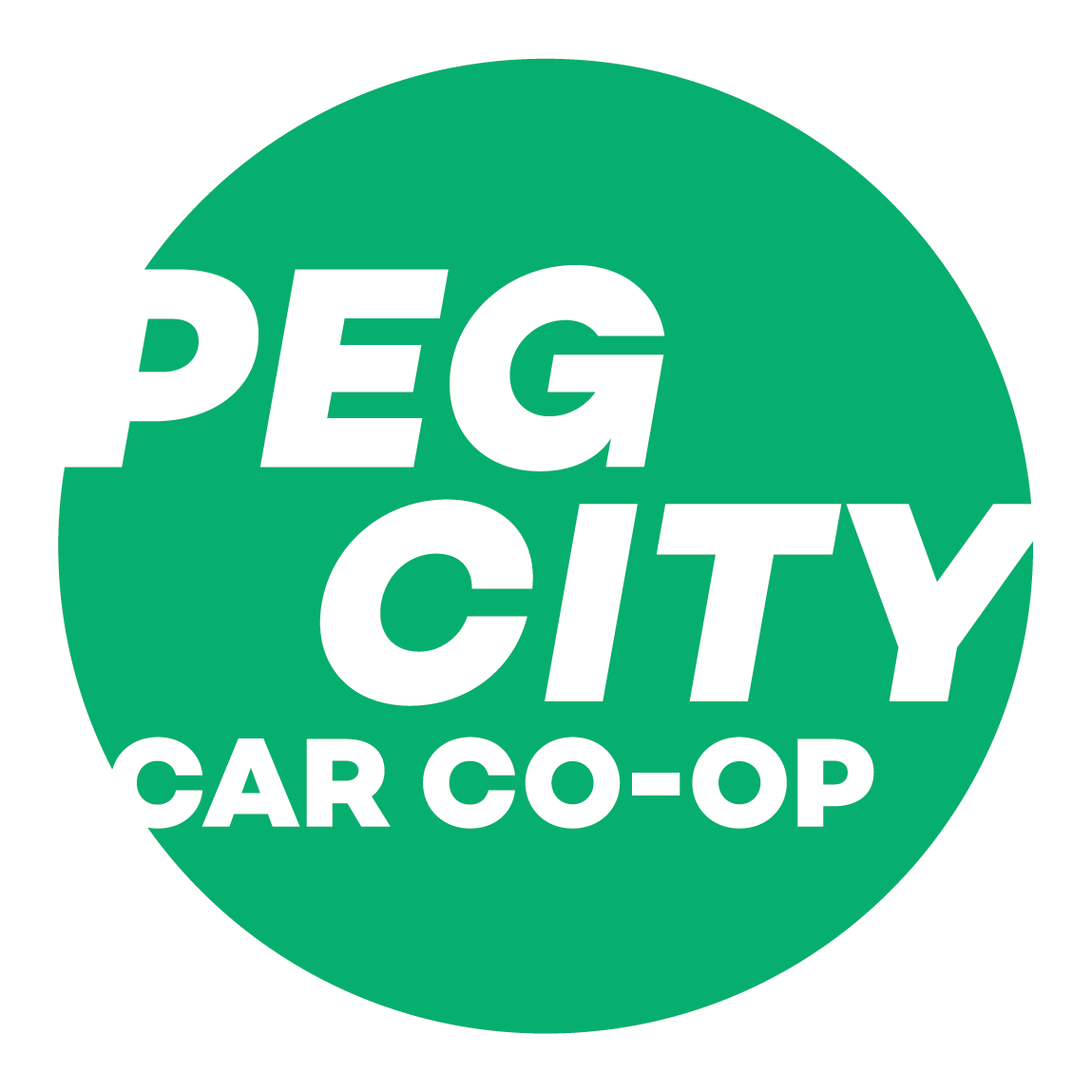


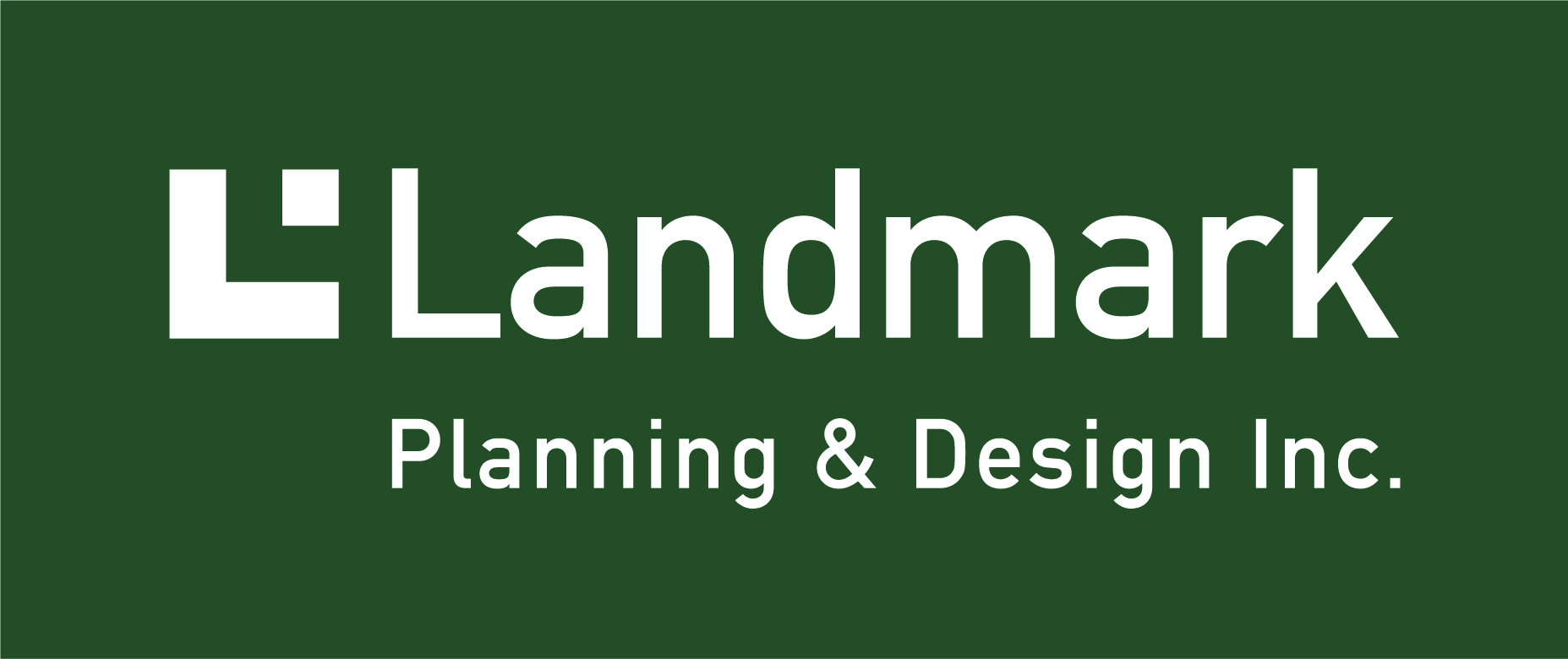


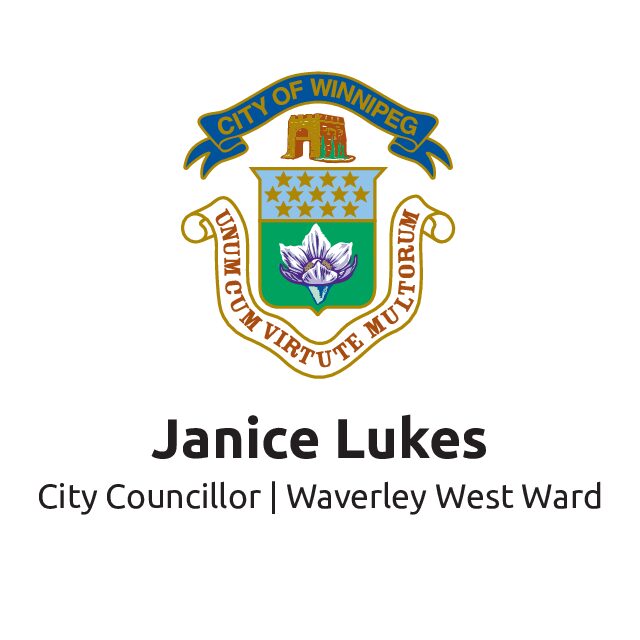




Recent Comments